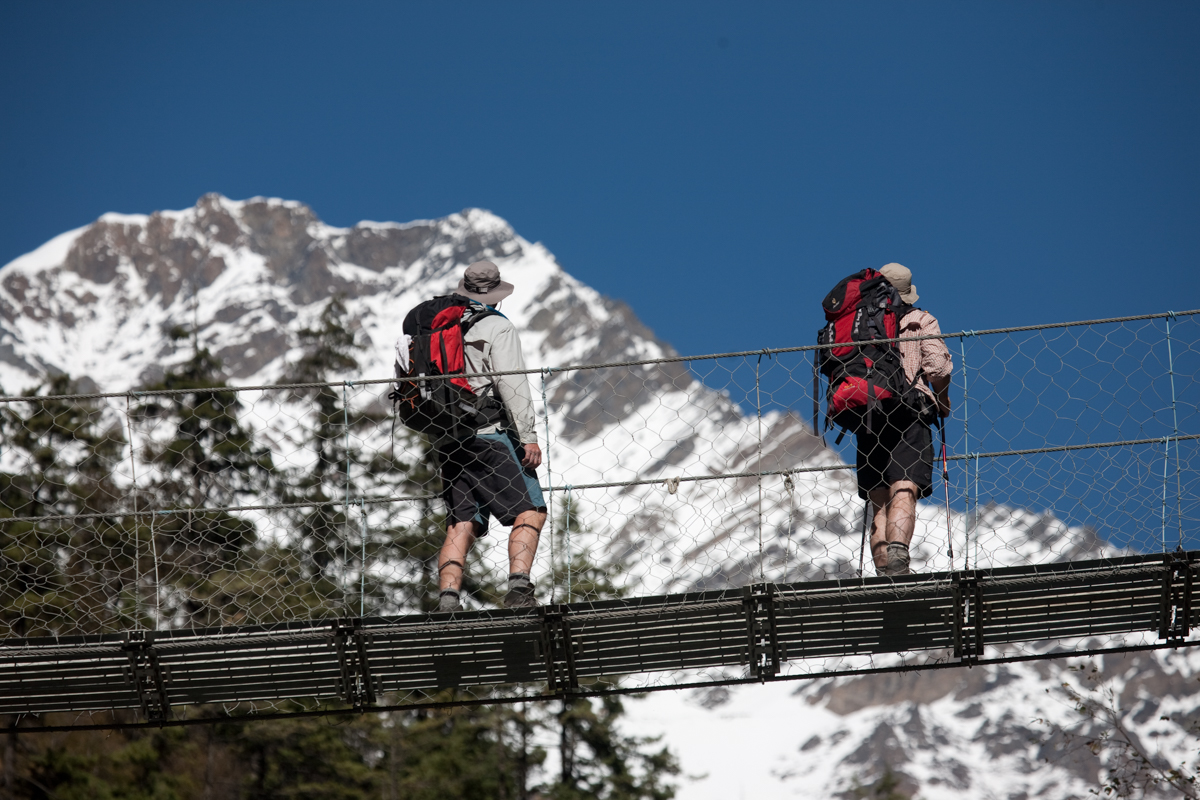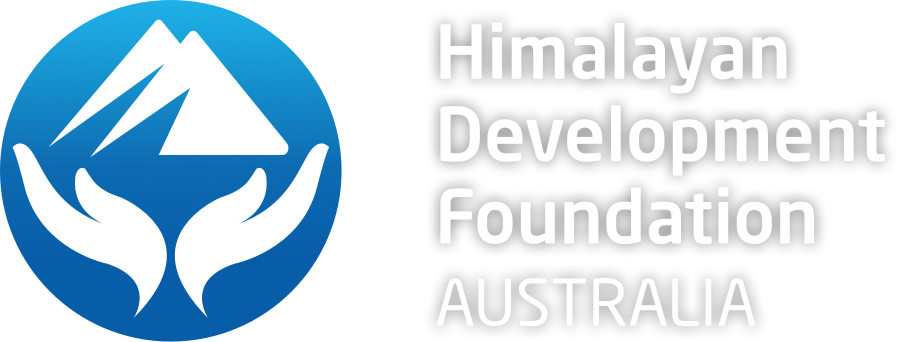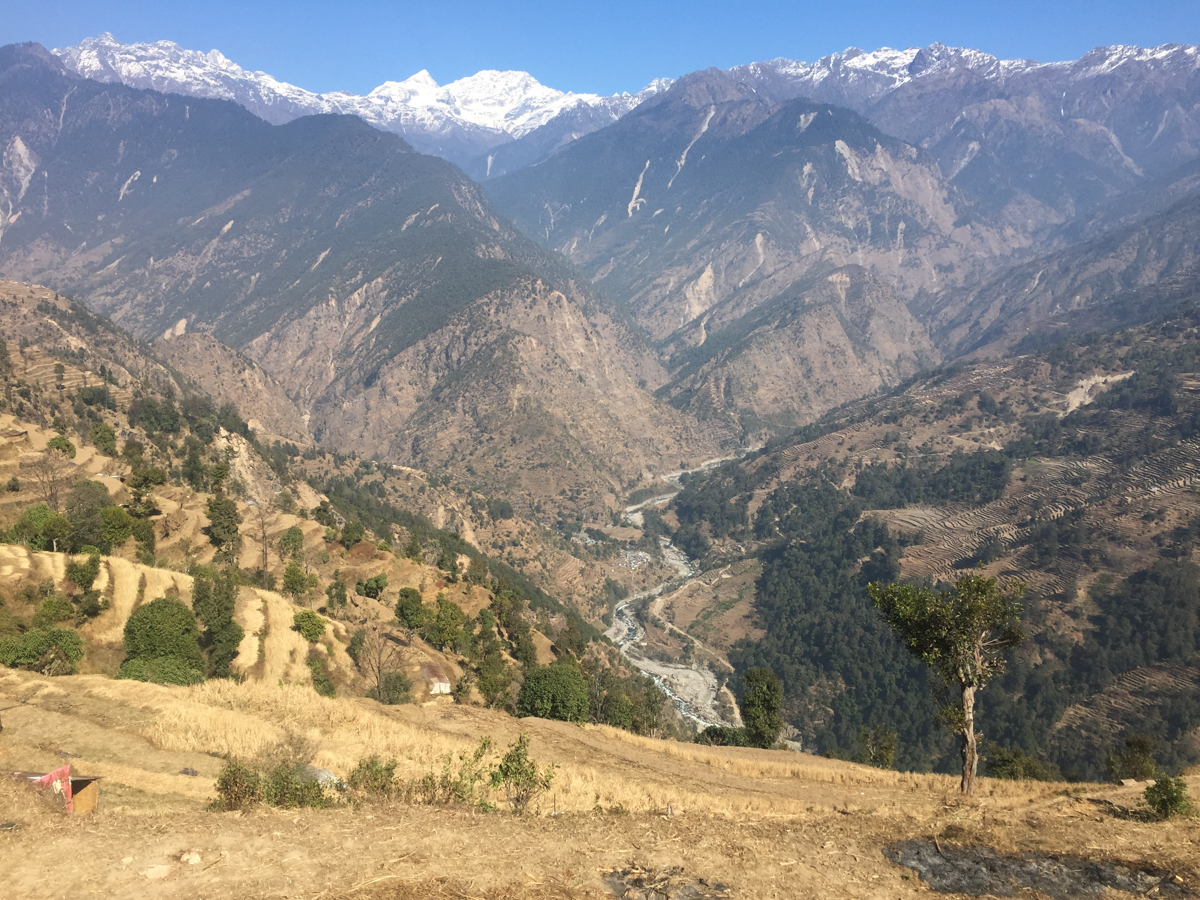
Itinerary in detail
Day 1 – Arrival in Kathmandu
We’ll collect you from the international airport for the short transfer to the group hotel. Meet your fellow trekkers and trek leader for a short briefing about the days to come and then dinner (hotel).

Day 2 – Hike to Chisapani (2095m)
There’s a short drive out to the edges of the sprawling capital city to Sundarijal, the start of our trek. We’ll meet our porter team. Picking our way slowly up through farms and small villages we head into the Shivapuri National Park, steadily up through thickening jungle to attain the valley rim. From here we hope to have great views of Langtang and Ganesh Himal, as well as the views back over the Kathmandu valley. Trekking down to Chisapani and our first camp where we meet our fabulous cook team.
(BLD, camp at 2095m, approx. 5-6 hours trek)
Day 3 – Hike to Gul Bhanjyang (2140m)
A lovely day winding in and out, up and down the ridges of the Helambu area. It’s a day of terraces and rhododendron glades; stupas and mani walls; big views and small sights as we follow the high trails soaking up the local life and stopping off here and there for photos, smiles and min-explorations. Camp tonight is a little higher on the bhanjyang (pass). There are many words for ‘pass’ in Nepalese – deurali, bhanjyang, la!
(BLD, camp at 2140m), approx. 5 hours trek)
Day 4 – Hike to Mangenoth (3250m)
There’s a cheeky start to the day with a steep climb to the Thodang Danda. The landscape starts to change from here becoming wilder with a big mountain feel. Passing through the village of Kutumsang there’s another steady ascent through a magical forest, emerging finally on the Panghu Danda at an altitude of 3300 metres. The ridge crest is thickly forested, with rhododendron and pine throughout. Hidden in the forest are small pastures, carved out by local herders for their animals. Many say these have spiritual significance too. We camp tonight at Mangengoth (3250m), where there are views across to Gosainkund.
(BLD, camp at 3250m, approx. 6 hours trek)
Day 5 – Hike the Tharepati Pass to Melamchi Gaon (2640m)
Magical woods and achingly huge views again today as we twist and turn along the Thodang Danda and then the Panghu Dandu to the cluster of lodges at Tharepati and the magnificent vistas beyond. From here we turn towards the North East and descend to the earthquake devastated village of Melamchi Gaon.
(BLD, camp at 2640m, approx. 6 hours trek)
Day 6 – Hike to Tarkeghyang (2743m)
Although our destination is about the same height as Melamchi Gaon, we have a long descent to the Melamchi khola and a steady hike back up the other side. Tarkeghyang has a very important Buddhist monastery.
(BLD, camp at 2740m, approx. 6 hours trek)
Day 7 – Ascend Ama Yangri (3770m), descend to Bangdang (1905m)
We make an early start today for the 1000m ascent to Ama Yangri peak. The trails take us out of the village through terraces and farms to eventually attain the pine and juniper covered ridge line. Ama means mother in Nepalese and this peak is believed to be the goddess protector (dakini) of the entire Hyolmo valley region. Her top is covered in colourful prayer flags and beautifully painted stupa. She stands alone, affording an uninterrupted view of Dorje Lhakpa, Gaurishanker and many, many more of the Himal. After snacks and lots of photos we head down, this time bearing off left to the head of the Yangri Khola and our camp site for the evening. There’s an option to go directly to camp with the crew for those who don’t want to summit.
(BLD, camp at approx. 2800m, approx. 7 hours trek)
Day 8 – Hike to Bolgaon (1870m)
A shorter, easier day today as we head down and around the high flanks of the Yangri valley to reach the village of Bolgaon. This is where HDFA is supporting the running of an Outreach Clinic (ORC) staffed by two of PHASE Nepal’s health workers and their supervisor, Sangita. Depending on what time we get in, we’ll meet with the local health post committee and other key people to find out more about what’s happening here.
(BLD, camp at 1870m, approx. 5 hours trek)
Note: we hope to be able to invite some of our local partners along if you’re curious to know more about the how, what, where of our work here
Day 9 – Hike to Bhotang, drive Nargakhot
Just three hours trek today as we drop down to Yangri at the head of the valley where the three rivers come together. Crossing the bridge we pick our way up through fields and terraces to the bustling village of Bhotang. After a look around the health post and tea, lunch and lots of chats we meet our vehicle for the bumpy journey down and out to Melamchi and then up to Nargakhot. Sadly we say goodbye to our crew at Bhotang.
Nargakhot is a pretty hill top town, these days mostly comprised of lodges and hotels popular with local and foreign visitors alike as a short break from the capital. They come because it’s cooler in monsoon and for the wonderful views across the Himalaya from Makalu in the East almost to the Annapurnas in the West.
Relax and enjoy hots showers, clean sheets and good hospitality.
(BLD, hotel, approx. 3 hours trek)
Day 10 – Sunrise, sightseeing to Kathmandu
Get up early, wrap up and get out to catch the sun rising over the mountains. Then a leisurely breakfast and a short drive down the hill to the ancient capital of Bhaktapur. Kathmandu has three ancient cities – Kathmandu, Patan and Bhaktapur each centred around a magnificent ‘durbar’ square of temples and palaces. Although many of these temples were damaged in the earthquakes the durbars are still very special places. If there’s time we may be able to visit one of the artisans’ workshops and watch the stone and wood carvings that are rebuilding these ancient sites using techniques and tools handed down through generations.
Drive back to Kathmandu for a celebratory dinner at one of the capital’s many great restaurants
(B, hotel)
Day 11 – Sightseeing, relaxation Kathmandu
There’s chance to experience some of the other UNESCO World Heritage sites of the valley such as Bhoudnath and its recently rebuilt stupa; Swayambunath (the monkey temple), Patan’s durbar square or the bustling spics markets of Asan. We have a guide to reveal the torrid tales and hidden secrets of these wonderful, iconic places for you or relax and wander at your leisure through the myriad of streets, temples and laneways. A farewell dinner with the group before we part ways until the next Himalayan Journey!
(B, hotel)
Day 12 – Transfer to the airport
Breakfast at the hotel. Our team will be along to take you to the airport in good time for your flight home.
Or stay on for a few more days – please ask for ideas!
Nepal is a diverse and vibrant country with much to offer from action adventures such as rafting, canyoning and bungee to luxury spas, jungle safaris and peaceful lakeside walks at the famed resort of Pokhara in the foothills of the Annapurna. If you have a few days to spare, why not extend your trip!
A typical day on the trail
Wake up to a hot drink brought to your tent by our lovely cook team. Pack your bags and get ready for the day then come over to the dining tent for breakfast. Typically a breakfast on the trail might be porridge (mountain fuel!) or cereal and some sort of egg dish. We’ll collect our packed lunches and top up our water bottles ready for the day ahead. The porters will arrive as you’re breakfasting to carry your trek bag up to our next overnight stop. We’ll walk for an hour or so before taking a break and of course there are lots of wonderful views, people and interesting things and photo opp stops along the way too.
We usually take a lunch along the route, possibly stopping at a local lodge for a hot drink then continue on the trail to reach our next campsite where usually the team will have the tents up and bags out ready for us. We normally take a hot drink and cookies on arrival. Once we’re unpacked the team bring bowls of hot water around so we can wash in the privacy of our tent porch, get our ‘clean’ warm clothes on and be ready for the evening.
We finish the day with a three course meal – local style or Western there’s plenty of variety and lots of taste! We tend to drift off to bed fairly early although a quick peak outside at the night sky, particularly higher up where the heavens are really ablaze with stars, can be a late night treat before sleep.
Camp toilets are usually a pit dug somewhere away from the camp, from the water source and any crop fields.
When we camp near a lodge we may use their toilets. Nepalese toilets are of the squat type. Some are dry, some use water. Toilet paper and feminine hygiene products are not put into the toilet but typically disposed of in a bin close by.
How to book
To ensure your trekking holiday is right for you and in the interest of keeping a balance in the group we have a four step booking system:
1. Request and Complete the booking form.
2. If necessary we’ll contact you for a short chat about your needs and expectations so that we can ensure the trip is right for you.
3. We’ll confirm your booking and ask you to secure this with a deposit of USD$500. We’ll send more detailed joining information at this point, gear list and some tips on how to best prepare.
4. We’ll ask for payment in full at the latest 8 weeks before your departure date.
We run this trip with a minimum of six people. We will let you know when we have reached this number and that the trip is guaranteed to run. It is wise to wait until we get minimum numbers before booking your international flights. If we don’t reach minimum numbers we will offer those who have booked to continue the trip but with a surcharge for below minimum group size.




